how to run without injury pt. 2

In part 1, I shared standards for running with minimal wear & tear.
Now in part 2, I'll share strategies for how to achieve these standards.
All this information is from the book Ready to Run. Highly recommend the book.
Let's get started!
how to achieve the standards
tl;dr / a starting point
- Minimize sitting
- Establish a daily mobility routine
- Minimum viable routine IMO do the couch stretch and spend time in a squat
- Stay hydrated
- Warm up before runs
- Cool down after runs
high level tips
- Minimize sitting
- Get a standing desk & stand when you can
- Walk 2 mins every 30 mins
- Toss in stretches & mobility exercises for good measure
- Establish a mobility routine
- At least 10 mins a day
- E.g. start with 2 exercises, 2 focused mins each side
- No days off
- Before/after run is a good time
- The standards themselves can be good mobilization - left out repeating them for simplicity
neutral feet
- Be mindful to maintain neutral feet while running and during daily activities
- Consider these mobility exercises:
- Plantar mobilizations
- Toe grip
- Toe re-animator
- Calf smash
- Not exactly related, but important: put effort into learning to brace and bracing properly
- Neutral feet + neutral spine will help you achieve full power when running
- Barbell back squat can help with bracing
flat shoes
- Transition to flat shoes with the following instructions:
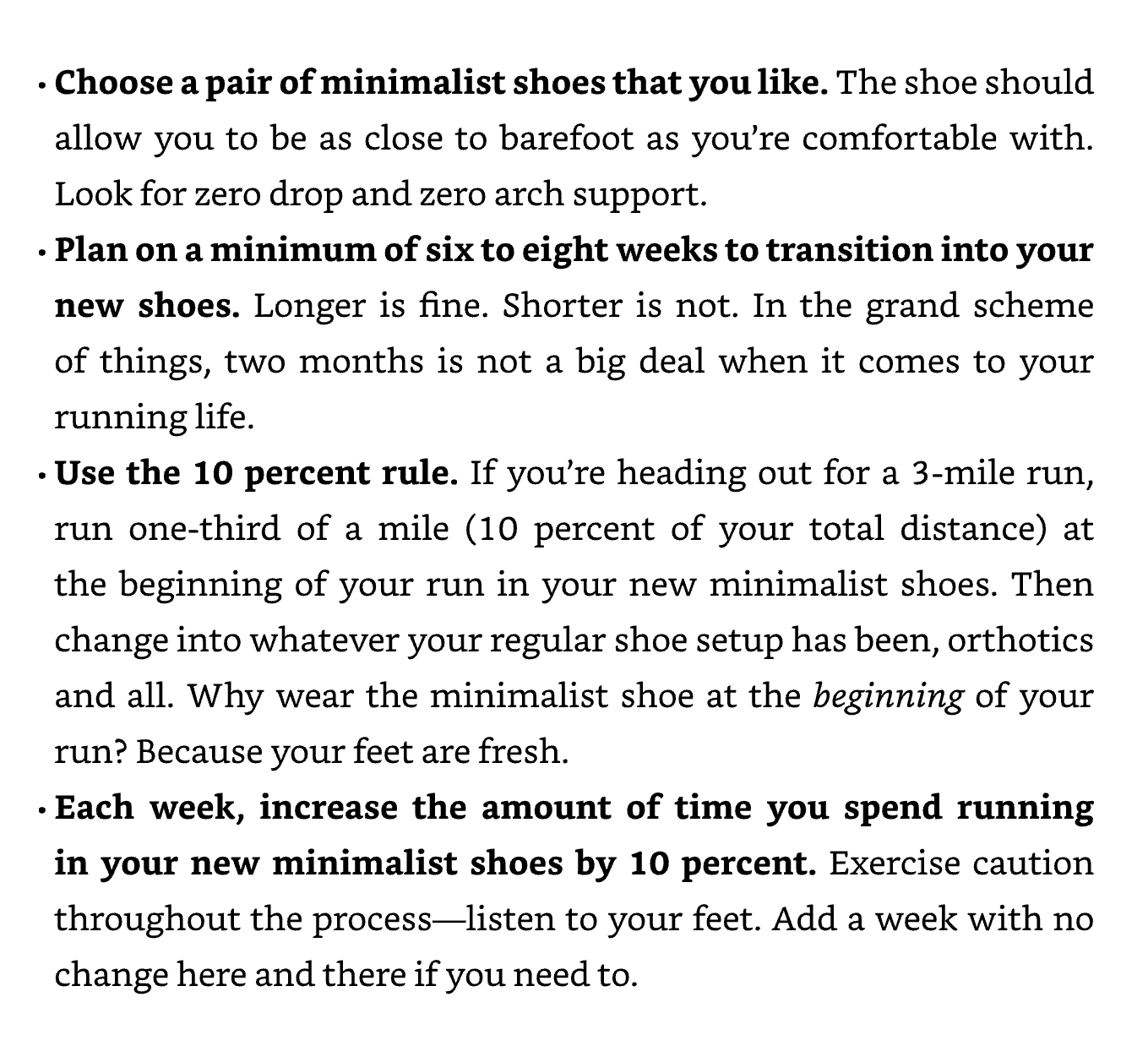
a supple thoracic spine
- Be mindful to maintain a supple thoracic spine
- Consider these mobility exercises:
- T-Spine global smash
- T-Spine double-ball strip
- Anterior shoulder
an efficient squatting technique
- Do a lot of squats
- Spend a lot of time in the squat position
- Consider these mobility exercises:
- Couch stretch
- Banded ankle mob
- Posterior chain banded floss
- Low-back ball smash
- 10-minute squat test
hip flexion
- Minimize sitting
- Consider these mobility exercises:
- Banded hip, single-leg squat
- Double-band hip distraction
- Glute smash & floss
- Hamstring smash & floss
hip extension
- Minimize sitting
- Do the couch stretch. "This stretch is to healthy running what flossing is to healthy teeth"
- Consider these mobility exercises:
- Couch stretch
- Banded hip, single-leg squat
- Psoas smash & floss
ankle range of motion
- Consider these mobility exercises:
- Plantar mobilizations
- Dorsiflexion work
- Plantar flexion overdrive
- Anterior hip smash
- Couch stretch
warming up and cooling down
- Warm up
- Few minutes of walking
- Consider some dynamic full-body movies like arm circles, lunges and burpees
- 2 minutes to mobilize any high priority joints or range of motion issues
- Some jump rope
- Few minutes of walking
- Cool down
- Turn last half mile of run into a walk
- If time allows, 5 minutes of mobility work
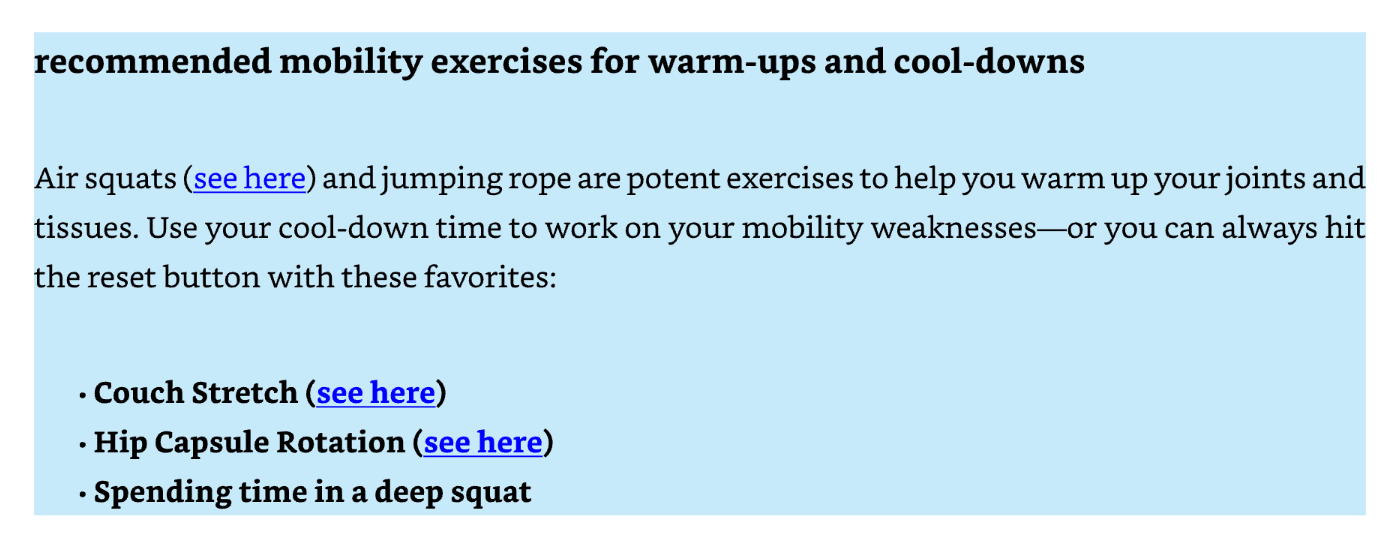
compression
- Wear compression socks for some amount of time each day e.g. after a run
- Amount of time not specified
no hotspots
- Take hotspots seriously
- Cut run short when if you feel a tweak
- If it feels sketchy, it is sketchy
- To fix hotspot:
- Do focused compression work on and near the hotspot (voodoo compression work)
- Do mobilizations above and below the problem (e.g. if the hotspot is in your knee, you should perform mobilizations for your lower leg and upper thigh)
hydration
- Failing standard could cost you 11% of your VO2 Max
- When drinking water without food, add a pinch to salt to get in those electrolytes
- Can also consider electrolyte mixes
Jumping and landing
- Consider these mobility exercises:
- Double-ball ankle smash & strip
- Plantar mobilizations
- Dorsiflexion work
- Plantar flexion overdrive
- Adductor smash
Appendix
runner's knee
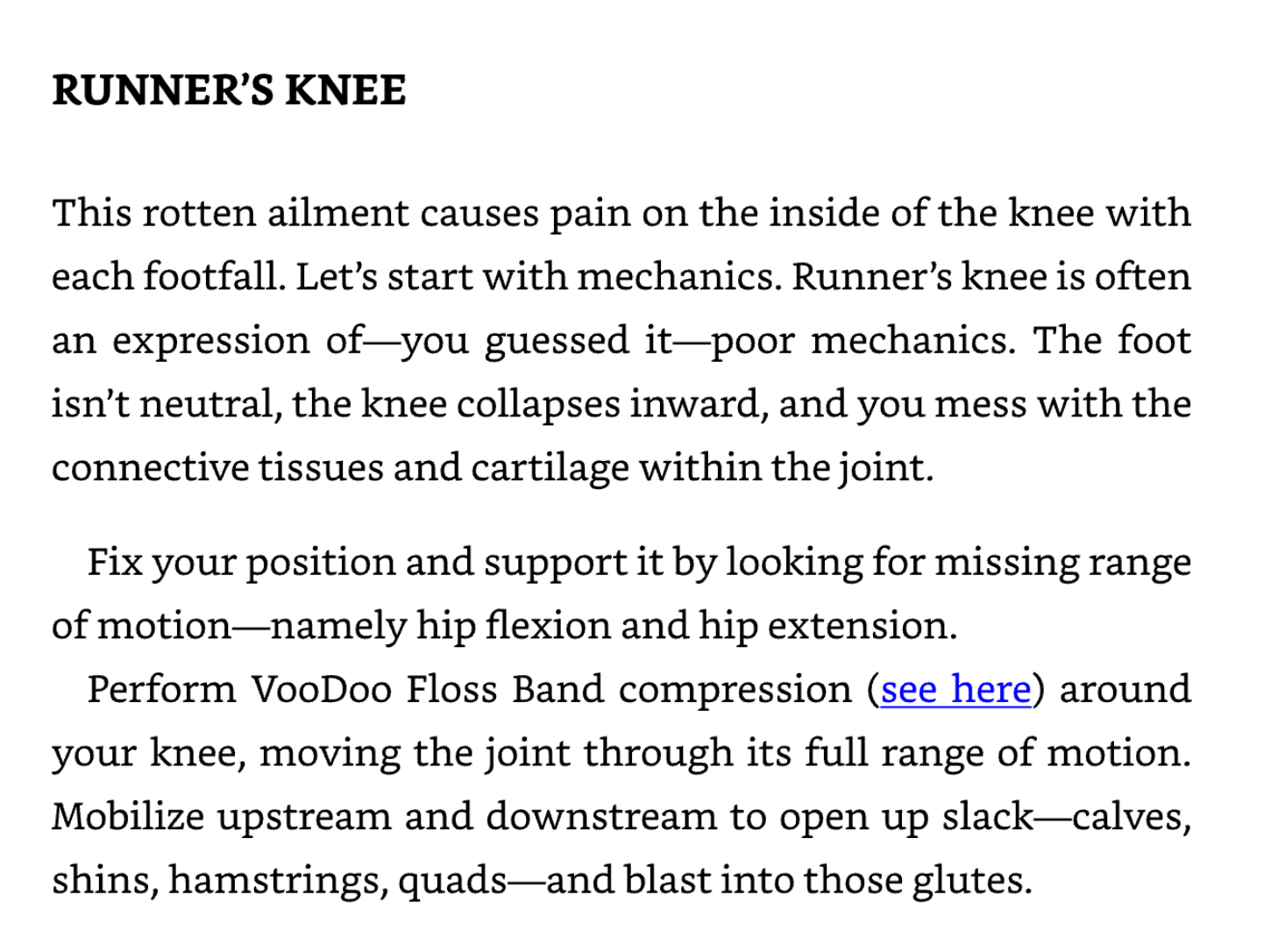
shin splints
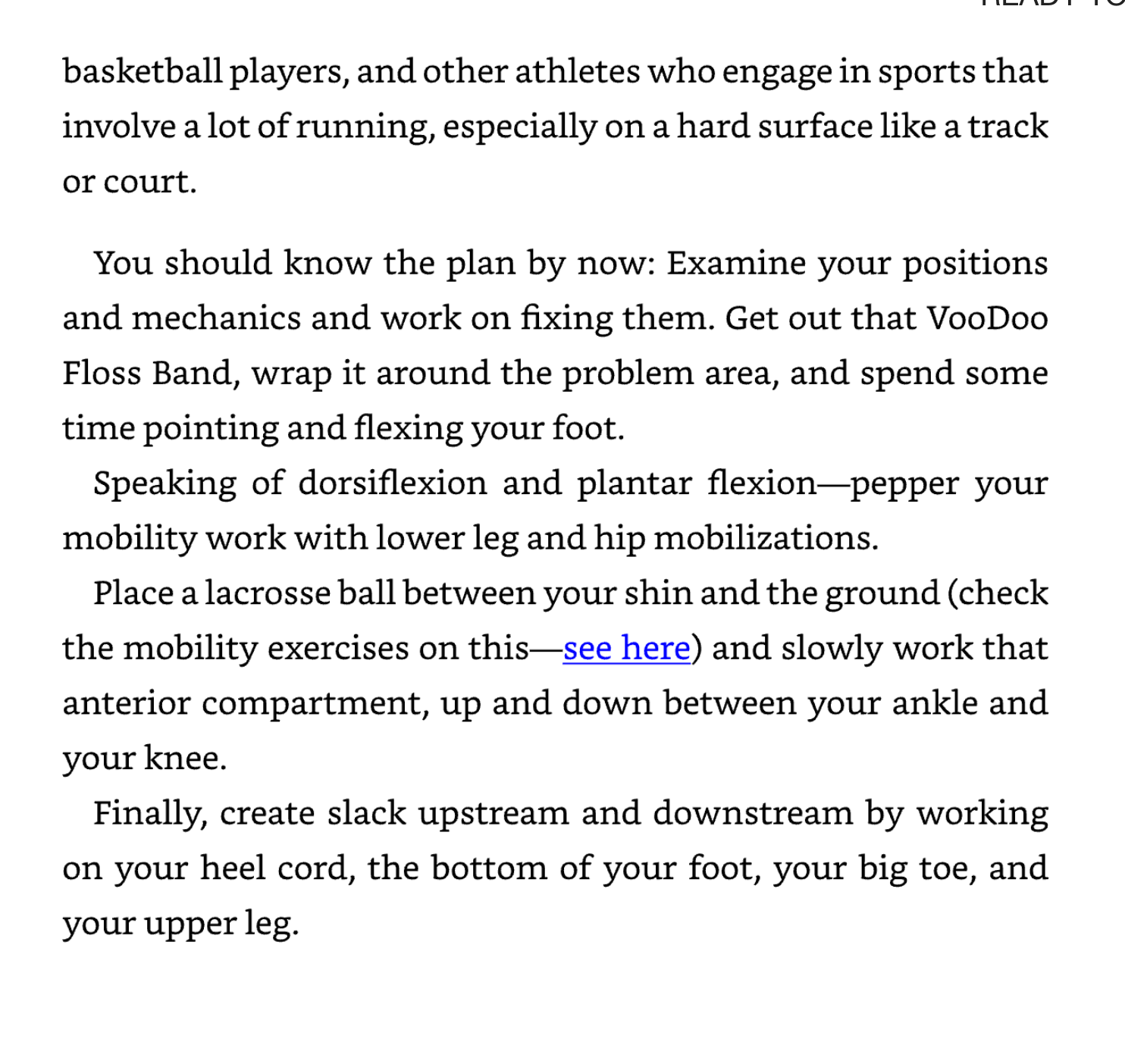
sample week of mobility work
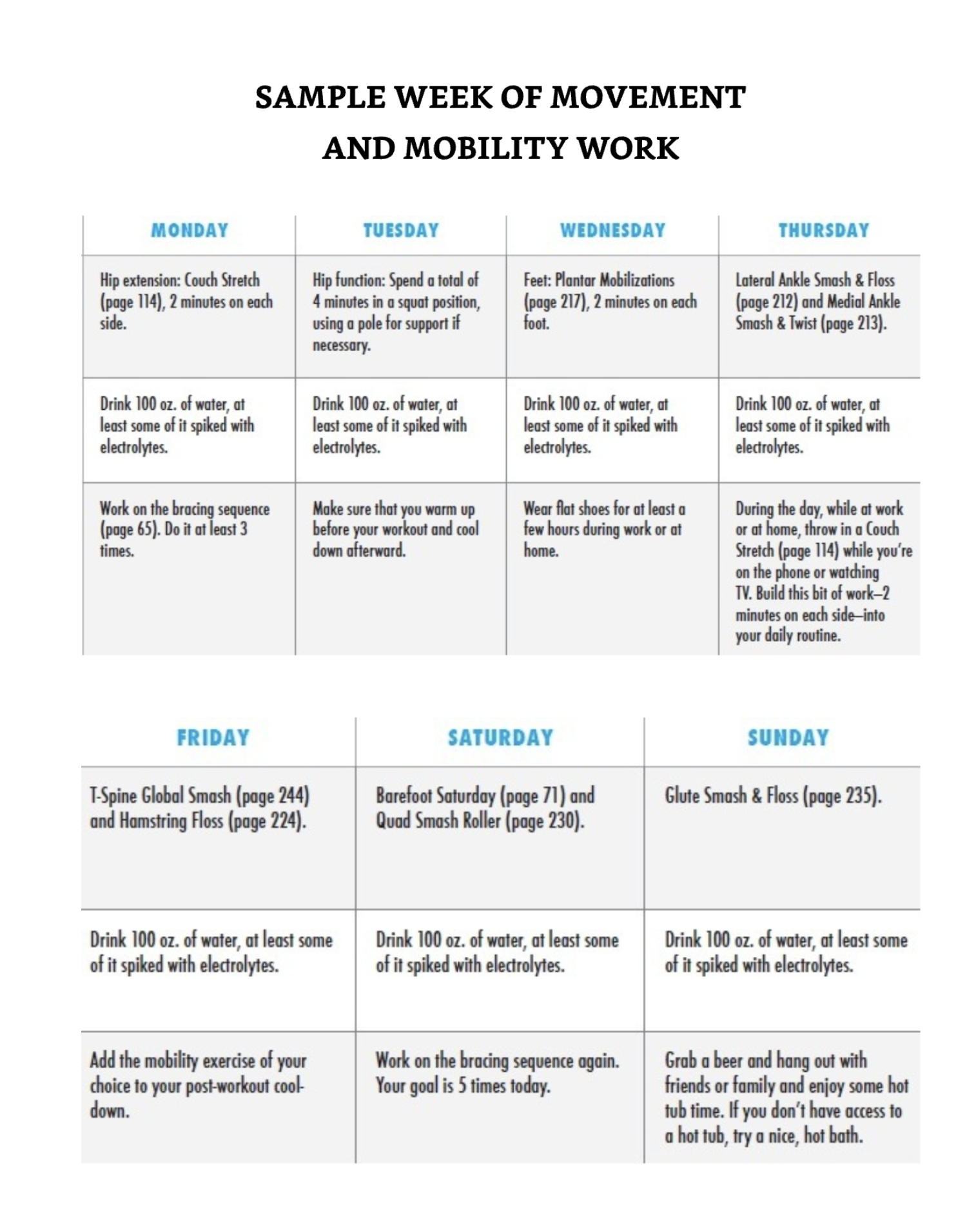
Member discussion